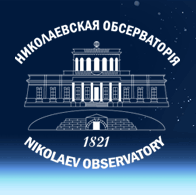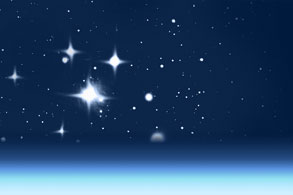| Repsold Vertical Circle |
|
2012-01-23 15:46:26
Vertical Circle is an astronomical instrument for measuring of zenith distances of celestial bodies that serve as material for the calculation of declinations. It is used in the preparation of catalog of absolute declinations of stars. It allows observer to obtain zenith distance of star from one observation of two positions of circle . The Half sum of the same zenith distance at the upper and lower culmination of the star gives the latitude of observing site, using which, the declination is derived. The history of the instrument In 1897, O. Backlund, the director of Pulkovo Observatory ordered Repsold Vertical Circle in Repsold firm (Munich) to instal it on the south. In February 1899, the Vertical Circle was taken to Odessa and in April 1899, A. Orbinskij started test observations of stars and the Sun. Before 1909, observations on the Vertical Circle were made by Peters method. By the time of the official transfer to Naval Observatory, Nikolaev Society of the factories and shipyards developed a project and built the pavilion for the Vertical Circle and transit instrument. The building was started in summer 1912, and fully completed in September 1913. At the beginning of June 1913, Messer, the Pulkovo mechanic, brought the vertical circle to Nikolaev. The observations were started in late December 1913, and continued until 1985, after which the instrument was preserved and handed over to the museum. In 2009 After restoration and repairment of the pavilion it has became a museum exhibit. The construction of the telescope and pavilion The Repsold Vertical Circle has Shtayngel lens (D = 108 mm and F = 1400 mm). Originally the reticle eyepiece was fixed and consisted of two vertical and three horizontal, two of which were close together. The optical tube of the instrument for setting to the celestial body can be rotated about horizontal axis. For setting the tube to the celestial body there are long handles through the cardan clutch connected with the micrometer screw, allowing continuously change zenith distance. Planted on the horizontal axis divided circle (2-minute, D = 700mm) is designed to measure vertical angles. Auxiliary Horizontal 10th minute limb (D = 300 mm) was used for the installation and the calculation of instrument's azimuth. The Vertical Circle was equipped with 4 microscope-micrometers fixed to the cylinder, and the horizontal with two microscopes, with the vernier scales is also connected with cylinder. To determine the inclination of the vertical axis in the plane of the meridian, two picosecond level were installed on the cylinder. The main structure, carrying on all the measuring devices, was cylinder with diameter of 600mm and the width of 285 mm. This vertical circle is used for observations in the meridian. The pavilion consists of two parts, separated by a double metal barrier. The upper part of the pavilion is a half-cylinder generatrices of which are parallel to the first vertical and from a height of the horizontal axis (1.8 m) to the floor walls are vertical. The walls and floor of the pavilion are based on the basic foundation that is not connected with instrumental. The floor of the pavilion is raised to the level of ground for 2m, and the basic foundation filled with soil. During the observations the western part of the roof is moved from the floor to the west, forming a slit width of 2.2m. Scientific programs and results Since March, 1914, observations of absolute declination catalog of 1904 stars from Backlund-Hof list of the epoch and equinox 1915.0 were conducted (in the framework of first international project "Sky Map"). 279 stars of the catalog were observed in both culminations. Observers: B. Ostaschenko-Kudryavtsev, B. Zaleskij. 1918, observations of the flashed stars, New Eagle, observations of the Sun and major planets were made. 1925-1927, observations of new catalog of absolute declinations for the epoch and equinox 1925.0 (Nik25). In general, for the Nik25 catalog 2929 observations of stars were made. All the stars were observed for at least 8 times and more than 80% was observed 12 times or more. The observer: G. Zimmerman. 1929-1939, the observations of Nik30 catalog, which included declination of 707 stars. The catalog was published in 1951. The observer: G. Zimmerman. 1935-39, observations of 1334 geodetic stars by the differential method. The results of observations were included to the Catalog of 2957 bright stars, N. Zimmerman. The observer: G. Zimmerman. Since 1939, observations of additional stars of FK3 list in declinations zone of +80 º to -30 º. In addition, 62 stars from the main FK3 list were observed. From 587 stars, which were included to the program, 75 were observed in both culminations. The observer: G. Zimmerman. 1945 -1951, observations of Nik50 catalog. Sun was also observed after the development of method for determining the bend involving observations of Sun. In a total, 8652 observations of stars and 380 observations of Sun were made. The catalog was published in 1958. The observer: G. Zimmerman. 1957-1964, the last catalog of absolute declinations Nik60 (744 stars), observed on the Repsold Vertical Circle, differed from the previous catalogs with the attempt of laboratory determination of flexure and the complete reversion to reinstall the ocular and objective lens. The catalog was published in 1977. Observers: I. Bojko (5933 observations) and G. Zimmerman (5367 observations). 1920-1985, observations of Solar System bodies: Sun - 4056, Moon – 225, Mercury - 436, Venus - 2319, Mars - 283, Jupiter – 339, Saturn - 282, Uranium - 173, Neptune - 100 etc. Observers: G. Zimmerman (50%), I. Bojko, V. Sibilev and others. 1975-1982, the study of astronomical refraction in daytime observations, which had improved the accuracy of the declinations of Sun and Venus. The observer: V. Sybil. |

Íàóêîâî-äîñë³äíèé ³íñòèòóò
Ìèêîëà¿âñüêà àñòðîíîì³÷íà îáñåðâàòîð³ÿ
̳í³ñòåðñòâî îñâ³òè ³ íàóêè
Ìèêîëà¿âñüêà àñòðîíîì³÷íà îáñåðâàòîð³ÿ
̳í³ñòåðñòâî îñâ³òè ³ íàóêè

 |
 |
 |